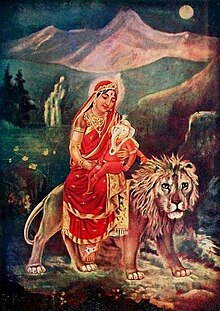You are currently logged-out. You can log-in or create an account to see more talks, save favorites, and more. more info
Parvati Talks

Parvati (Sanskrit: पार्वती, IAST: Pārvatī), also known as Uma (Sanskrit: उमा, IAST: Umā) and Gauri (Sanskrit: गौरी, IAST: Gaurī), is one of the principal goddesses in Hinduism, revered as the goddess of power, energy, nourishment, harmony, love, beauty, devotion, and motherhood. Along with Lakshmi and Sarasvati, she forms the trinity, known as the Tridevi.
From her first appearance as a goddess during the epic period (400 BCE – 400 CE), Parvati is primarily depicted as the consort of the god Shiva. According to various Puranas, Parvati is the reincarnation of Sati, Shiva's first wife, who relinquished her body to sever familial ties with her father, Daksha, after he had insulted Shiva. Parvati is often equated with the other goddesses such as Sati, Uma, Kali and Durga and due to this close connection, they are often treated as one and the same, with their stories frequently overlapping. In Hindu mythology, the birth of Parvati to the mountain lord Himavan and his wife Mena is primarily understood as a cosmic event meant to lure Shiva out of his ascetic withdrawal and into the realm of marriage and household life. As Shiva's wife, Parvati represents the life-affirming, creative force that complements Shiva's austere, world-denying nature, thus balancing the two poles of asceticism and householder life in Hindu philosophy. Parvati's role as wife and mother is central to her mythological persona, where she embodies the ideal of the devoted spouse who both supports and expands her husband's realm of influence. Parvati is also noted for her motherhood, being the mother of the prominent Hindu deities Ganesha and Kartikeya.
Philosophically, Parvati is regarded as Shiva’s shakti (divine energy or power), the personification of the creative force that sustains the cosmos. In this role, she becomes not only a mother and nurturer but also the embodiment of cosmic energy and fertility. She is the source of power that energises Shiva, who without her is incomplete. Parvati's mythology, therefore, is not just about her role as a wife but also about her cosmic function as the force that activates and sustains life. In various Shaiva traditions, Parvati is also regarded as a model devotee, and even viewed as the embodiment of Shiva's grace, playing a central role in the spiritual liberation of devotees. She is also one of the central deities in the goddess-oriented sect of Shaktism, where she is regarded as a benevolent aspect of Mahadevi, the supreme deity, and is closely associated with various manifestations of Mahadevi, including the ten Mahavidyas and the Navadurgas. Parvati is found extensively in ancient Puranic literature, and her statues and iconography are present in Hindu temples all over South Asia and Southeast Asia. In Hindu temples dedicated to her and Shiva, she is symbolically represented as the yoni.
| Title | Speaker | |
|---|---|---|
Coming Of AgeSerial: SF-01062 Story of Parvati and ...(?); falling in love - never alone; the entire universe in ten directions is the true human body; Coming of Age Program; samsara/dukkha; parenting a... Parvati, Karma, Dukkha, Samsara, Lotus Sutra, New Year, Continuous Practice, Hate,... |
May 20 2007 Green Gulch Farm |